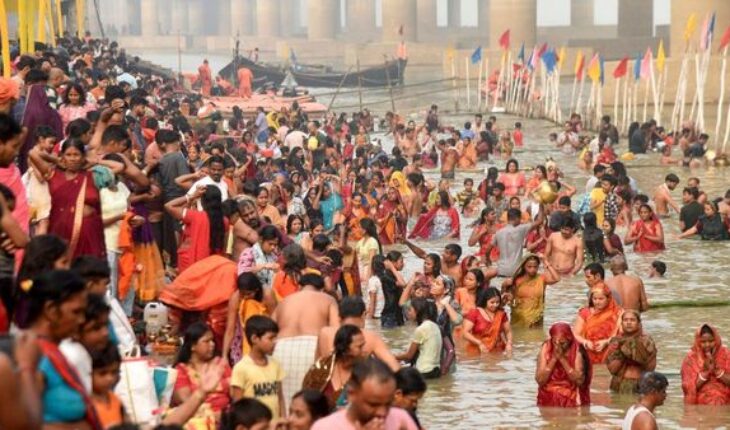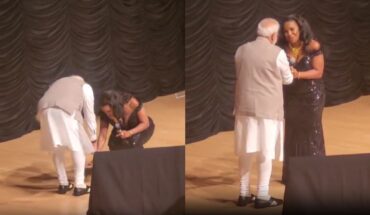Chhath festival is celebrated immediately after Diwali on Amavasya in Kartik month. This festival starts from the third day of Bhaiyya Dooj. According to the Panchang, every year Chhath Mahaparva starts with Chaturthi Tithi of Shukla Paksha in Kartik month, which ends with offering water to the Sun on Saptami Tithi. The most important date in this is Shashthi Tithi. This festival is mainly celebrated in Bihar and Purvanchal, but at present this fast is being celebrated with great pomp and show across the country and in many other countries as well.
This is one of the most difficult festivals of Hindus, because during this the fasting Vrati and the common people follow the strictest rules. The fasting people keep a waterless fast for 36 hours. Chhath is a apbhransh of Shashthi. This festival is celebrated twice a year. First time in Chaitra month and second time in Kartik month. The Chhath festival celebrated on Chaitra Shukla Paksha Shashthi is called Chaiti Chhath and the festival celebrated on Kartik Shukla Paksha Shashthi is called Kartik Chhath. Chaiti Chhath is considered more difficult because it is very difficult to keep a continuous waterless fast for 36 hours during the summer days.
This festival is celebrated for family happiness and prosperity and to get the desired results. There is a tradition of singing folk songs during Chhath festival, such as, while preparing prasad, at the time of Kharna, while going to offer arghya, at the time of arghya donation and while returning home from the ghat. This year i.e. in the year 2024, the first day of Chhath celebrated in the month of Kartik is Nahai-Khai on 5 November (Tuesday). Kharna is on 6 November (Wednesday), Arghya to the setting (setting) sun is on 7 November (Thursday) and Arghya to the rising (rising) sun is on 8 November (Friday). The fourth day of this great festival is considered the most special and this great fast ends on this day. This festival is celebrated with great pomp for four days.
Nahai-Khai is on the Chaturthi date of Shukla Paksha of Kartik month. On this day, first the house is cleaned and made pure. Thereafter, the Chhath Vratis take a bath and start the fast by consuming pure vegetarian food prepared in a sacred manner. All the members of the family take their meals only after the Vratis have eaten. Kaddu-Daal (made of bottle gourd, lentils and gram) and rice are consumed as food.
On the second day, Kartik Shukla Panchami, the devotees observe a day-long fast and then eat in the evening. This is called ‘Kharna’. Friends, neighbours and relatives are invited to receive the Kharna Prasad. Rice pudding made in sugarcane juice and milk, rice pitha and roti are prepared as Prasad. Both sides of the roti are smeared with ghee. Salt or sugar is not used in this. During this, special attention is paid to the cleanliness of the entire house.
On the third day, Kartik Shukla Shashthi, Chhath Prasad is prepared during the day. Apart from Thekua, which is also called Tikri in some areas of Bihar basically Magadh region, rice laddus, which are also called Ladua, are made as Prasad. Apart from this, batasha made of sugar, moulds made of sugar, fruits, sugarcane etc. are also included as Chhath Prasad. In the evening, the basket of arghya is decorated and the devotee along with the family and the neighbours proceed towards the ghat to offer arghya to the setting sun.
All the Chhath devotees gather on the banks of a pond or river and collectively perform the arghya donation. Now people also make a haud (place to store water) in their homes and offer arghya to the sun. Water and milk arghya are offered to the sun and Chhathi Maiya is worshipped with a sieve filled with prasad. On the fourth day, on the morning of Kartik Shukla, arghya is offered to the rising sun. The devotees gather again at the same place where they had offered arghya in the evening. The evening process is repeated. In the end, the devotees complete the fast by drinking raw milk sherbet and eating prasad.
Even in today’s modern times, Chhath Vrat remains synonymous with a tough penance. Earlier, women who wanted a son and for the well-being of their son generally kept this fast, because it was believed that women who kept the fast of Chhath festival get a son. However, in the changing environment, this festival is celebrated to fulfil any wish. Now, devotees have started observing Chhath festival to get a daughter as a child. Men are also observing this fast with full devotion to fulfil any wish or with devotion.
The woman who keeps the fast is also called Parvaitin. In this four-day fast, the devotee has to fast continuously. Along with food, comfortable bed is also given up. The devotee spends the night on the floor with the help of a blanket or sheet in the room made for the festival. In this festival, the devotee wears such clothes which do not have any kind of stitching. Women observe Chhath wearing saree and men wearing dhoti. Usually, after starting Chhath festival, it has to be performed every year until a married woman or man of the next generation is ready to perform it. This festival is not performed if someone dies in the family.
There are many mythological and folk tales that explain the tradition of Chhath Puja and its importance. According to one belief, on the day of establishment of Ramrajya after the victory of Lanka, Lord Ram and Mother Sita fasted and worshipped Sun God on Kartik Shukla Shashthi. On Saptami, at sunrise, they performed the ritual again and received blessings from Sun God. According to another belief, Chhath festival started during the Mahabharata period. Surya Putra Karna was the first to worship Sun God. Karna was an ardent devotee of Lord Sun. He used to stand waist deep in water for hours every day and offer Arghya to the Sun. It was only by the grace of the Sun that he became a great warrior. Even today, this method of offering Arghya is prevalent in Chhath.
In some stories, there is mention of Pandavas’ wife Draupadi also worshipping the Sun. She used to worship the Sun regularly for the good health and long life of her family. According to a legend, King Priyavad had no children. Then Maharishi Kashyap performed Putrayeshti Yagna and gave the kheer prepared for the Yagna to his wife Malini. Due to its effect, they had a son, but he was born dead. Priyavad took his son to the crematorium and tried to suicide in the separation from his son. At that very moment, God’s daughter Devsena appeared and said that I am called Shashthi because I am born from the sixth part of the basic nature of the creation. King, you worship me and inspire others to do the same. Thereafter, the king observed the fast of Goddess Shashthi on Kartik Shukla Shashthi with the desire to have a son and he was blessed with a son.
Satish Singh, Ahmedabad Based Senior Columnist, views are personal






